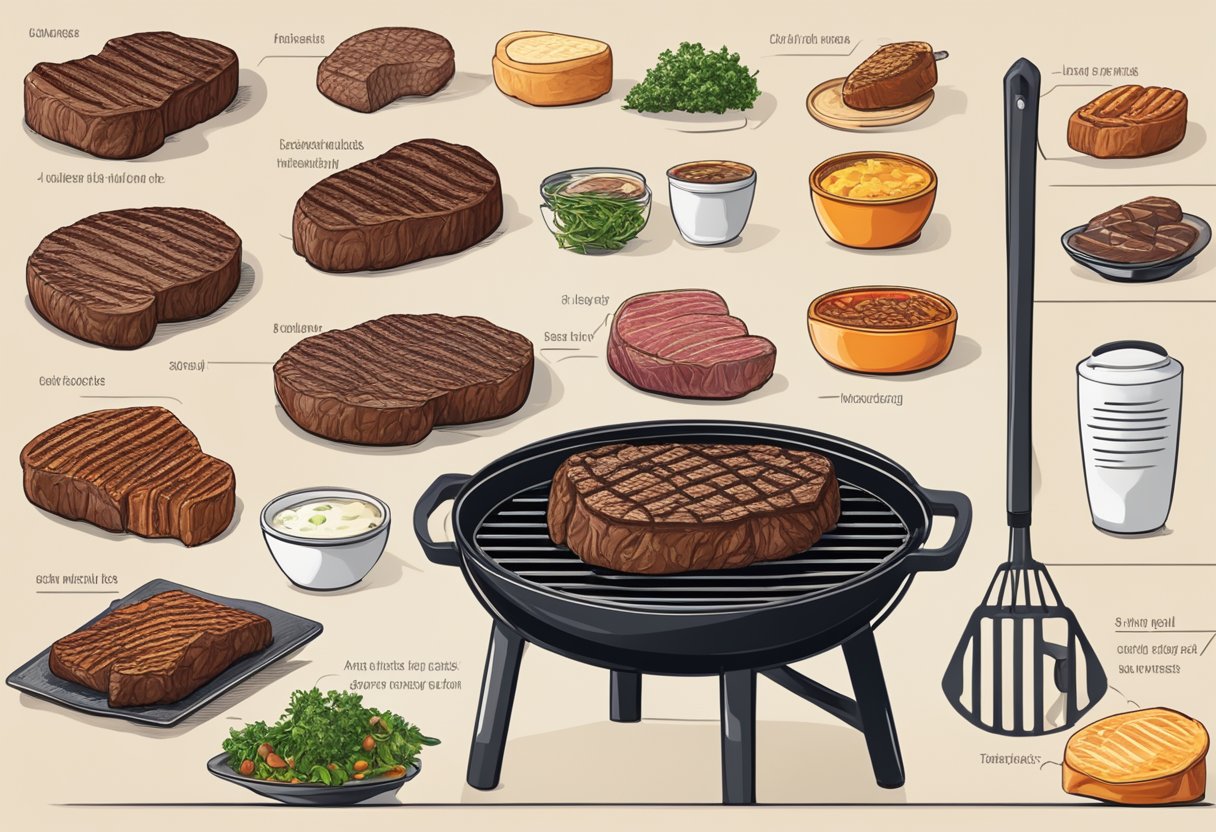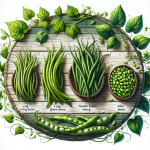Types Of Steak Cooked
Steak is a popular dish enjoyed by many people around the world. There are different types of steak, and each type requires a specific cooking method to achieve the desired doneness. Understanding the different types of steak and how to cook them can help you prepare a delicious and satisfying meal.
To begin with, it is important to understand steak doneness. Steak doneness refers to how well-cooked the steak is, and it is typically categorized into six levels: blue rare, rare, medium rare, medium, medium well, and well done. Each level of doneness has a different appearance, texture, and flavor. Understanding steak doneness can help you cook the steak to your liking.
Selecting the right cut of steak is also crucial in achieving a delicious and satisfying meal. Different cuts of steak have different textures, flavors, and cooking times. Some of the most common cuts of steak include ribeye, sirloin, T-bone, and filet mignon. Knowing the characteristics of each cut can help you choose the right one for your meal.
Key Takeaways
- Understanding steak doneness is crucial in achieving the desired texture, flavor, and appearance of the steak.
- Selecting the right cut of steak is important in achieving a delicious and satisfying meal.
- Different types of steak require specific cooking methods to achieve the desired doneness and flavor.
Understanding Steak Doneness

When it comes to steak, the level of doneness is a crucial factor in determining the texture, juiciness, and flavor of the meat. The doneness of a steak is determined by its internal temperature, which is influenced by the cooking time and method.
Rare Steak
A rare steak is cooked for a short time, resulting in an internal temperature of 125-130°F. This level of doneness produces a steak that is red in the center and has a cool, almost raw texture. Rare steak is typically juicy and has a slightly chewy texture.
Medium-Rare Steak
A medium-rare steak is cooked for a slightly longer time, resulting in an internal temperature of 130-135°F. This level of doneness produces a steak that is pink in the center and has a warm, slightly raw texture. Medium-rare steak is typically juicy and tender.
Medium Steak
A medium steak is cooked for a moderate amount of time, resulting in an internal temperature of 135-145°F. This level of doneness produces a steak that is pink throughout the center and has a warm, slightly pink texture. Medium steak is typically less juicy than rare or medium-rare steak but is still tender.
Medium-Well Steak
A medium-well steak is cooked for a longer time, resulting in an internal temperature of 145-155°F. This level of doneness produces a steak that is slightly pink in the center and has a warm, slightly brown texture. Medium-well steak is typically less juicy than medium or medium-rare steak and is slightly chewy.
Well-Done Steak
A well-done steak is cooked for the longest time, resulting in an internal temperature of 155°F or above. This level of doneness produces a steak that is brown throughout and has a dry, tough texture. Well-done steak is typically less juicy and less flavorful than other levels of doneness.
In conclusion, understanding the different levels of steak doneness is important for achieving the desired texture, juiciness, and flavor of the meat. The internal temperature of the steak is the key factor in determining the level of doneness, and cooking time and method play a crucial role in achieving the desired level of doneness.
Selecting the Right Cut
When it comes to selecting the right cut of steak, there are a few factors to consider. The tenderness, toughness, and fat content of the cut are all important factors to keep in mind. In this section, we’ll take a closer look at these factors and how they relate to the different cuts of steak available.
Tender Cuts
Tender cuts of steak are generally found in the middle of the animal, where the muscles are used less frequently. These cuts are typically more expensive but are also more tender and flavorful. Some of the most popular tender cuts include filet mignon, ribeye, and porterhouse.
Tough Cuts
Tough cuts of steak are typically found in areas of the animal that are used more frequently, such as the legs or shoulders. These cuts require more preparation and cooking time to become tender and flavorful. Some popular tough cuts include flank and strip steak.
Lean vs Marbled Cuts
The fat content of a cut of steak can greatly affect its flavor and tenderness. Lean cuts of steak, such as sirloin, have less marbling and are generally less tender than more marbled cuts like ribeye. However, lean cuts can be a healthier option for those watching their fat intake.
When selecting a cut of steak, it’s important to consider the cooking method as well. Some cuts are better suited for grilling, while others are better for slow cooking. By considering the tenderness, toughness, and fat content of the cut, as well as the desired cooking method, you can select the perfect cut of steak for your next meal.
Preparation Techniques
Preparing a delicious steak requires more than just choosing the right cut of meat. It also involves proper seasoning, tenderizing, and bringing the meat to room temperature. Here are some preparation techniques that can help you achieve a perfectly cooked steak.
Seasoning and Marinades
One of the simplest ways to add flavor to a steak is by seasoning it with salt and pepper. Salt helps to enhance the natural flavors of the meat, while pepper adds a subtle kick. A dry rub made from herbs and spices can also be used to add more depth of flavor.
Marinades are another popular way to add flavor to a steak. A marinade is a mixture of oil, acid, and seasonings that is used to tenderize and flavor the meat. Acidic ingredients such as vinegar, citrus juice, or wine help to break down the connective tissues in the meat, making it more tender. The meat should be marinated for several hours or overnight in the refrigerator before cooking.
Tenderizing Methods
Tenderizing is the process of breaking down the connective tissues in the meat to make it more tender. There are several methods for tenderizing steak, including pounding, scoring, and using a meat tenderizer tool.
Pounding involves using a meat mallet to flatten the meat to an even thickness. Scoring involves making shallow cuts in the meat to break up the fibers and connective tissues. A meat tenderizer tool is a device with small blades that is used to pierce the meat and break up the fibers.
Bringing to Room Temperature
Bringing the steak to room temperature before cooking is an important step in ensuring that it cooks evenly. When the steak is cold, the center takes longer to cook than the outer layers, which can result in an unevenly cooked steak.
To bring the steak to room temperature, it should be removed from the refrigerator 30-60 minutes before cooking. This allows the internal temperature of the steak to rise, making it easier to cook evenly.
Cooking Methods
When it comes to cooking steak, there are several methods to choose from, each producing a different flavor and texture. The three most popular methods are grilling, pan-searing, and oven finishing.
Grilling Steaks
Grilling is a classic method for cooking steak that produces a smoky, charred flavor. To grill a steak, preheat the grill to high heat and brush the grates with oil to prevent sticking. Season the steak with salt and pepper, and grill for 4-5 minutes per side for medium-rare, or until the desired doneness is reached. Let the steak rest for a few minutes before slicing to allow the juices to redistribute.
Pan-Searing Steaks
Pan-searing is a stovetop method that produces a crispy, caramelized crust on the steak. To pan-sear a steak, heat a heavy skillet over high heat and add a tablespoon of oil or butter. Season the steak with salt and pepper, and sear for 3-4 minutes per side for medium-rare, or until the desired doneness is reached. Let the steak rest for a few minutes before slicing to allow the juices to redistribute.
Oven Finishing
Oven finishing is a method that combines searing on the stovetop with finishing in the oven. To oven finish a steak, heat a heavy skillet over high heat and add a tablespoon of oil or butter. Season the steak with salt and pepper, and sear for 2-3 minutes per side. Transfer the skillet to a preheated 400°F oven and cook for an additional 6-8 minutes, or until the desired doneness is reached. Let the steak rest for a few minutes before slicing to allow the juices to redistribute.
Overall, the choice of cooking method depends on personal preference and the cut of steak being cooked. Each method has its own advantages and produces a unique flavor and texture. By following these simple steps, anyone can cook a perfect steak every time.
Steak Serving and Presentation
Serving and presenting the steak is just as important as cooking it to perfection. Here are some tips and techniques to help you impress your guests with a beautifully plated and garnished steak.
Resting the Meat
After cooking, it’s crucial to let the steak rest for a few minutes before slicing it. This allows the juices to redistribute and settle, resulting in a more tender and flavorful steak. A good rule of thumb is to let the steak rest for about 5 minutes for every inch of thickness.
Slicing Techniques
When slicing the steak, it’s essential to cut against the grain to ensure tenderness. The grain refers to the muscle fibers in the meat, and cutting against it shortens these fibers, resulting in a more tender steak. Additionally, slicing the steak at an angle can create a visually appealing presentation.
Plating and Garnishes
Plating and garnishing the steak can elevate its presentation and add extra flavor and texture. A simple and classic way to plate a steak is to place it in the center of a large plate and add some roasted vegetables on the side. Garnishes like fresh herbs, microgreens, or finely sliced vegetables can add a pop of color and freshness to the plate. Additionally, a sauce or compound butter can enhance the flavor of the steak.
Remember that the presentation of the steak should complement its taste and texture. Avoid overcomplicating the plating or garnishes to ensure that the steak remains the star of the dish.






